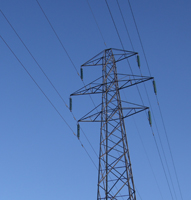Tomorrow’s energy grid will have to do far more than yesterday’s, and its evolution will depend on thousands of distributed devices. Will your IoT-based utility network be able to meet challenges? asks Phil Beecher, President and CEO of the Wi-SUN Alliance.
We know that Internet of Things connectivity is a strategic priority for many utilities because they have told us so. In late 2017, the Wi-SUN Alliance surveyed representatives from 350 organisations across a range of sectors in countries including the US, the UK, Denmark and Sweden. 78pc of the utilities we interviewed highlighted IoT as a top issue for the coming year, surpassing the 67pc of companies across all sectors that highlighted IoT enablement as a key area.
Utilities are following through on this interest with large investments. In 2017, US utilities’ IoT network connections grew by 41pc, according to Verizon. In the EU, research company North East Group anticipates a $133.7bn investment in smart grid infrastructure through 2027.
To truly capitalise on IoT innovation, utilities must consider several key factors as they design and deploy these next-generation infrastructures. At the Wi-SUN Alliance, we have identified three main factors that we believe should be at the top of every utility’s list when designing IoT-based networks: scalability, security and interoperability.
The technology underpinning IoT-based networks for utilities must be able to support their rapid growth. This makes scalability a key factor for utilities as they develop infrastructures to manage water, gas and electricity. The communications network must stay reliable and fast as utilities add more devices to it. Network topology is an important consideration when planning a highly scalable grid solution.
The radio communication networks supporting wireless IoT come in several topologies, but mesh networks are particularly resilient and reliable, as well as being capable of providing 100pc coverage. Mesh topologies ensure that each device connects with at least two others. They then route traffic via each other according to predefined rules.
Just like the Internet, mesh networks have multiple routes to send data back to the utility’s central processing facilities, and they can adapt the routing in the event of device failure, local interference or other disruptions. This makes them ideal for low-power, flexible two-way data communication networks extending over wide areas.
Security
Smart grid technology offers a host of consumer benefits, but the technology underpinning it must be secure against attack. In March this year, the United States Computer Emergency Readiness Team (US CERT) released a report detailing sustained, systematic cyberattacks on the US energy sector, among others. Energy Secretary Rick Perry warned in Congressional testimony that cyberattacks are “happening hundreds of thousands of times a day”.
Wi-SUN’s mesh networking platform offers several design features to bolster security and protect smart utility networks from attack. Devices use digital certificates to authenticate before they join the network. Wi-SUN’s secure-by-design technology stops attackers from impersonating legitimate smart grid devices either with their own rogue hardware or by installing rogue firmware in utility deployed devices. The Wi-SUN FAN’s standards-based multi-layer security specification also includes encryption to prevent attackers from snooping on smart grid network traffic.
All equipment vendors making Wi-SUN-compatible devices must pass a stringent set of tests as part of the Wi-SUN Alliance’s Field Area Network (FAN) Certification. The Alliance works with an international group of testing laboratories that put all new devices through a series of tests to ensure that they support the FAN profile’s security requirements.
Interoperability
FAN certification also supports the third important factor underpinning IoT innovation in utility environments: interoperability. In its Cyber Security in the Energy Sector report, the EC’s Energy Expert Cyber Security Platform group (EECSP) said “cyber security in a multi-vendor environment requires interoperability where components should rely on the same set of security standards and requirements used”.
A robust certification process for the network technology underpinning smart grid systems removes a layer of complexity for utility network planners. The Wi-SUN FAN certification includes an interoperability testing stage, in which a manufacturer’s equipment communicates with devices from multiple other vendors to confirm that it works properly with other equipment.
Thanks to FAN certification, when a utility procures equipment with the Wi-SUN Certified logo, it can be sure that it will connect and function seamlessly with any other Wi-SUN Certified equipment, regardless of manufacturer.
The Wi-SUN FAN supports frequency bands across a wide range of geographic regions which, coupled with the Alliance’s network of international testing partners, enables product vendors to conduct certification testing locally and utilities to deploy a Wi-SUN FAN mesh solution appropriate for their region.
Utilities building out their IoT networks must choose a secure, scalable and interoperable network technology supported by a robust, well-governed certification process. This will serve as a powerful platform for future innovation which will equip energy grids to serve the fast-evolving consumer and business needs.
About the author
He is a graduate of the University of Sussex with a degree in Electronic Engineering and holds patents in communications and networking technology. For more on Wi-SUN and FAN certification visit www.wi-sun.org.










